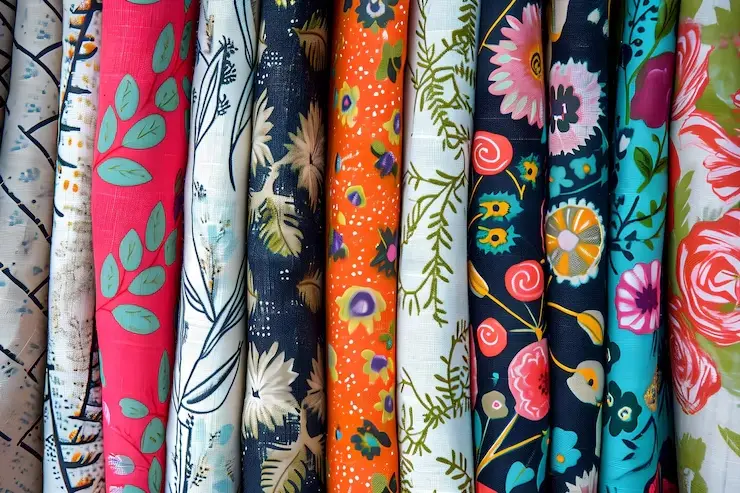The fashion industry is experiencing a revolutionary transformation in 2024, driven by sustainability concerns, technological innovations, and evolving consumer consciousness. As designers, staying ahead of these trends isn't just about following what's popular – it's about understanding the deeper cultural shifts that influence how people want to dress, express themselves, and interact with fashion.
This year marks a significant turning point where fashion becomes more inclusive, sustainable, and technologically integrated than ever before. Whether you're an established designer or just starting your fashion journey, these trends will shape not only what we create but how we think about fashion's role in society.
The Sustainability Revolution
Sustainability isn't just a trend anymore – it's become the foundation of responsible fashion design. Consumers are increasingly conscious of their environmental impact, demanding transparency and eco-friendly practices from the brands they support.
Trend Spotlight
Circular fashion design is gaining momentum, where every piece is created with its end-of-life in mind. Designers are now considering how garments can be recycled, upcycled, or biodegraded when designing new collections.
Key Sustainable Materials to Watch
Color Trends That Define 2024
This year's color palette reflects our collective desire for optimism, digital connection, and natural harmony. The trending colors range from vibrant tech-inspired hues to calming earth tones.
Color is the most powerful tool in a designer's arsenal. It can evoke emotions, create cultural connections, and influence purchasing decisions. In 2024, we're seeing colors that bridge the digital and physical worlds, reflecting our increasingly hybrid lifestyle.
Design Aesthetics Shaping the Year
Beyond materials and colors, the overall aesthetic directions for 2024 reflect broader cultural movements and technological integration.
Technology Integration in Fashion
The integration of technology in fashion has moved beyond mere gadgetry to become an essential part of the design process and final product. From 3D printing to smart textiles, technology is reshaping how we create and interact with clothing.
Digital Design Tools
Modern fashion designers are increasingly relying on digital tools for every aspect of their work:
- 3D Fashion Design Software: Tools like CLO3D and Marvelous Designer allow designers to create virtual garments, reducing sample waste and speeding up the design process
- AR Fitting Rooms: Augmented reality technology enables customers to try on clothes virtually, reducing returns and improving satisfaction
- AI-Powered Trend Forecasting: Machine learning algorithms analyze social media, runway shows, and consumer behavior to predict future trends
- Blockchain for Authenticity: Ensuring product authenticity and supply chain transparency through blockchain technology
Smart Fabrics Revolution
Fabrics embedded with electronics are becoming more sophisticated and practical. From temperature-regulating materials to fabrics that can charge devices, smart textiles are opening new possibilities for functional fashion design.
Consumer Behavior Shifts
Understanding how consumer behavior is evolving is crucial for designers who want to create relevant, desirable products. The pandemic has permanently altered how people think about clothing and self-expression.
The Rise of Comfort-First Fashion
The work-from-home revolution has prioritized comfort without sacrificing style. Consumers now expect clothing that works for multiple occasions – from video calls to grocery runs to casual social gatherings.
Rental and Resale Markets
The circular economy is gaining traction with platforms like Rent the Runway and TheRealReal. Designers need to consider how their pieces will perform in rental markets and maintain quality through multiple wearers.
Market Insight
The global fashion rental market is expected to reach $2.08 billion by 2025, with a compound annual growth rate of 10.7%. Designing for durability and timeless appeal is becoming increasingly important.
Incorporating Trends While Maintaining Your Voice
The challenge for any designer is balancing trend awareness with personal artistic vision. Here's how to navigate this delicate balance:
- Identify Your Core Aesthetic: Before incorporating any trend, establish what makes your design voice unique and authentic
- Select Strategically: Choose 2-3 trends that naturally align with your aesthetic rather than trying to incorporate everything
- Adapt, Don't Copy: Take inspiration from trends but interpret them through your unique lens
- Think Long-term: Focus on trends that have staying power rather than fleeting fads
- Test with Your Audience: Use social media and feedback to gauge how trend integration resonates with your target customers
Practical Implementation Strategies
Moving from trend awareness to practical application requires strategic planning and careful execution.
Building a Trend-Informed Collection
When developing your next collection, consider this framework:
- Foundation Pieces (40%): Timeless designs that form the core of your brand identity
- Trend-Forward Pieces (30%): Items that incorporate current trends while staying true to your aesthetic
- Statement Pieces (20%): Bold designs that showcase your creative vision and generate buzz
- Experimental Pieces (10%): Forward-thinking designs that test new concepts and materials
Sustainable Trend Adoption
As you incorporate trends, maintain sustainable practices:
- Source materials from certified sustainable suppliers
- Design for longevity rather than disposability
- Consider the complete lifecycle of each garment
- Communicate your sustainability efforts to consumers
Looking Ahead: Preparing for Future Trends
While it's important to understand current trends, successful designers also develop skills to anticipate and prepare for future movements.
Trend Research Methodologies
Develop your own trend forecasting abilities by:
- Following fashion weeks and trade shows globally
- Monitoring social media and street style photography
- Studying cultural movements and societal changes
- Analyzing consumer behavior data and market research
- Networking with other designers and industry professionals
Building Your Trend Intelligence
Create a systematic approach to trend research. Set aside time weekly to study emerging movements, document interesting developments, and analyze how they might influence your work. The key is consistent observation and thoughtful analysis.
Conclusion: Your Trend Strategy for Success
The fashion landscape of 2024 offers unprecedented opportunities for designers who can balance trend awareness with authentic creativity. The key is not to chase every trend but to thoughtfully integrate the movements that align with your vision and values.
Remember that trends are tools, not rules. They provide context and inspiration, but your unique perspective and creative voice are what will ultimately set your work apart. Use these trends as a starting point for innovation, not as a template to follow.
As we move through 2024, the most successful designers will be those who can merge sustainability, technology, and creativity into cohesive collections that speak to contemporary consumers while pushing the boundaries of what fashion can be.
Stay curious, remain authentic, and never stop experimenting. The fashion world is constantly evolving, and your ability to evolve with it while maintaining your creative integrity will determine your long-term success in this dynamic industry.

